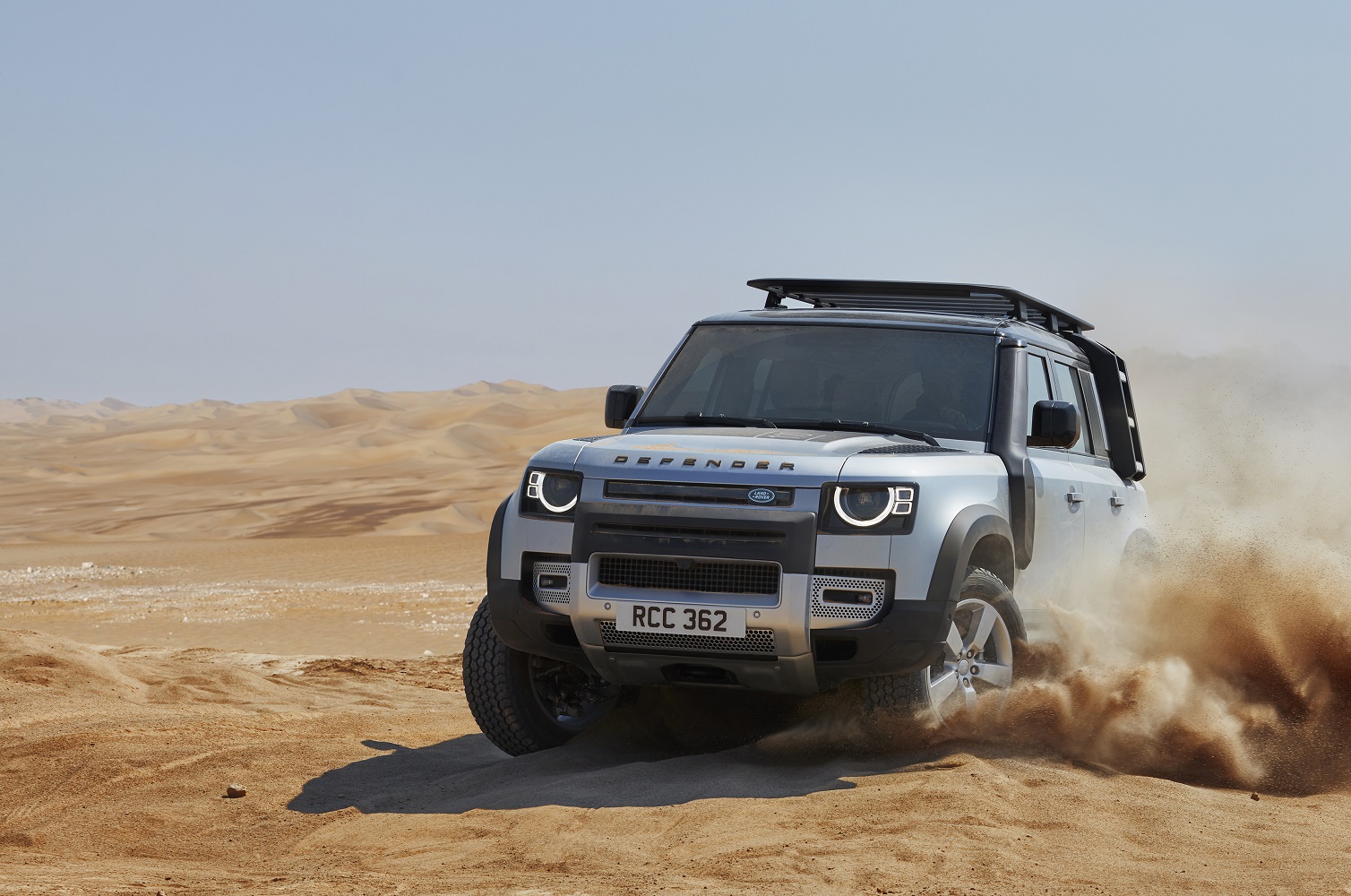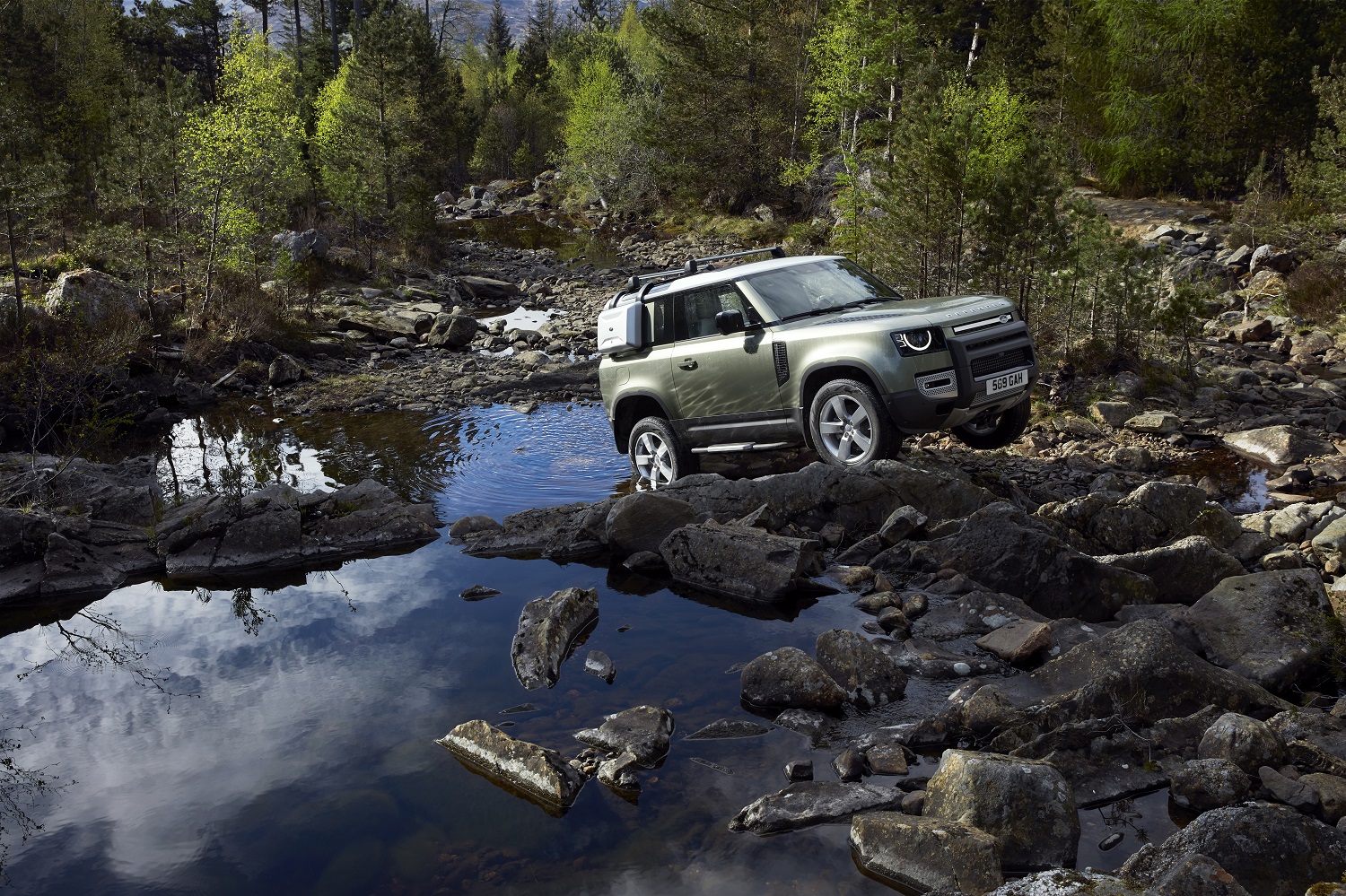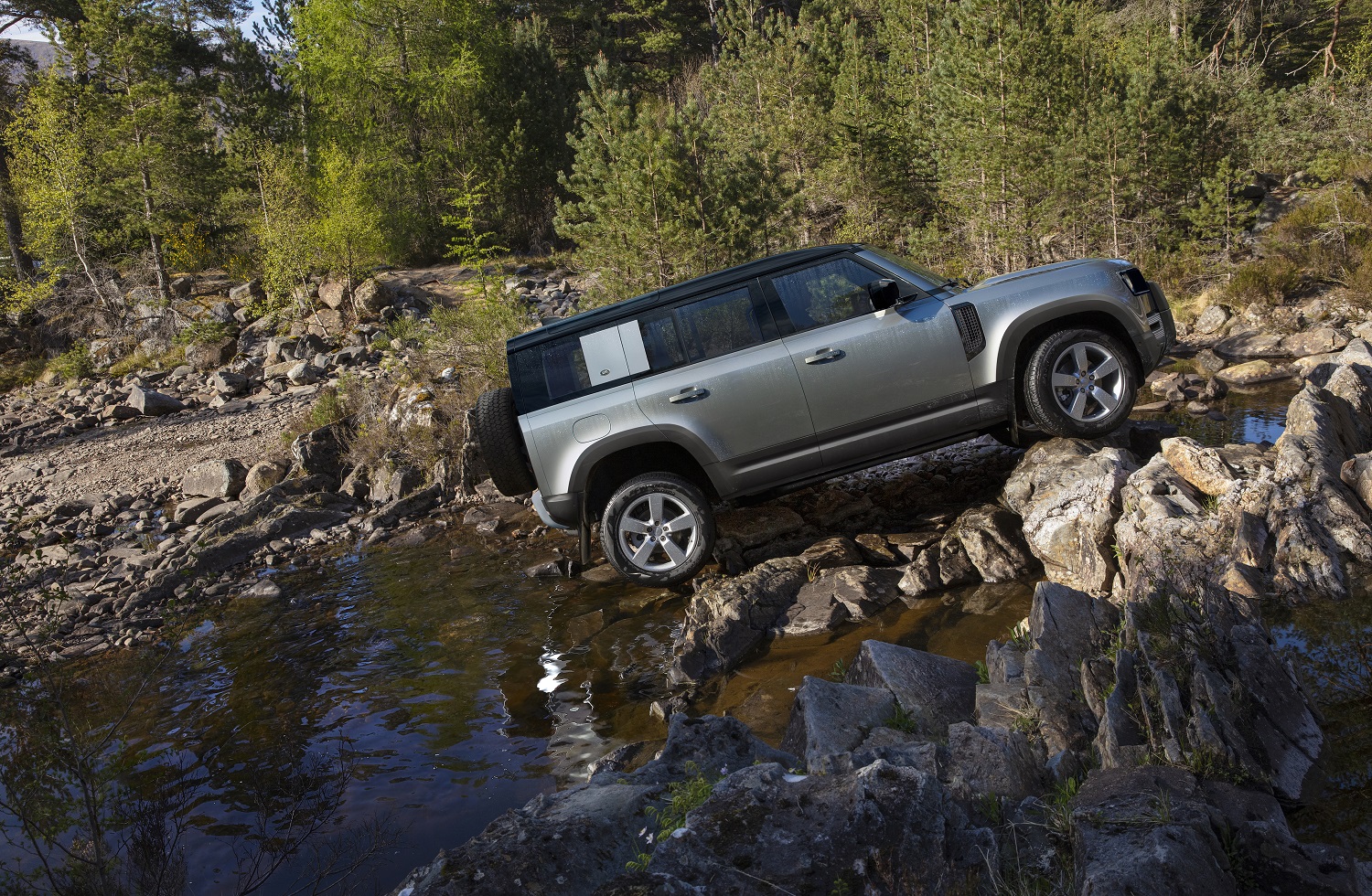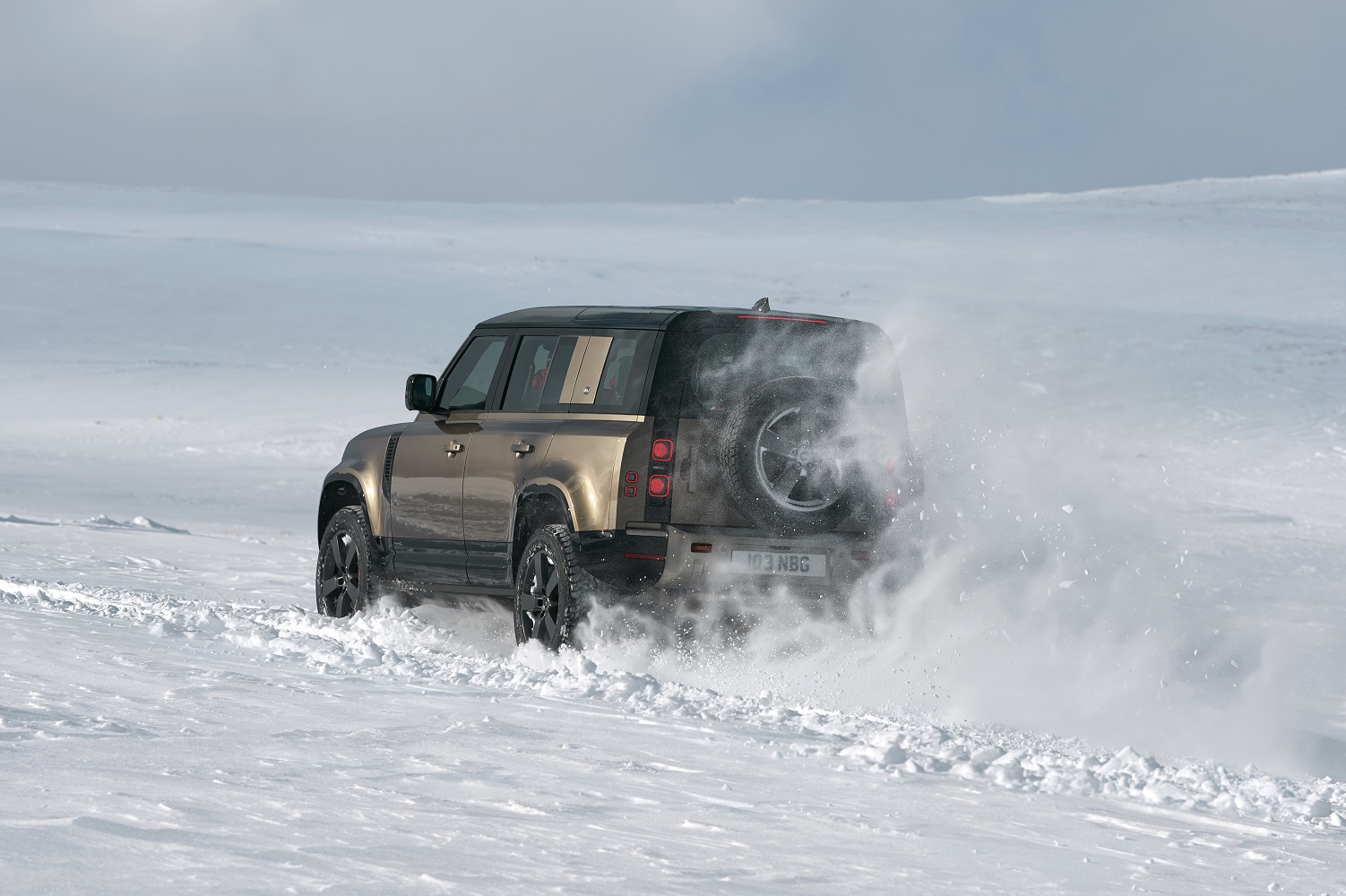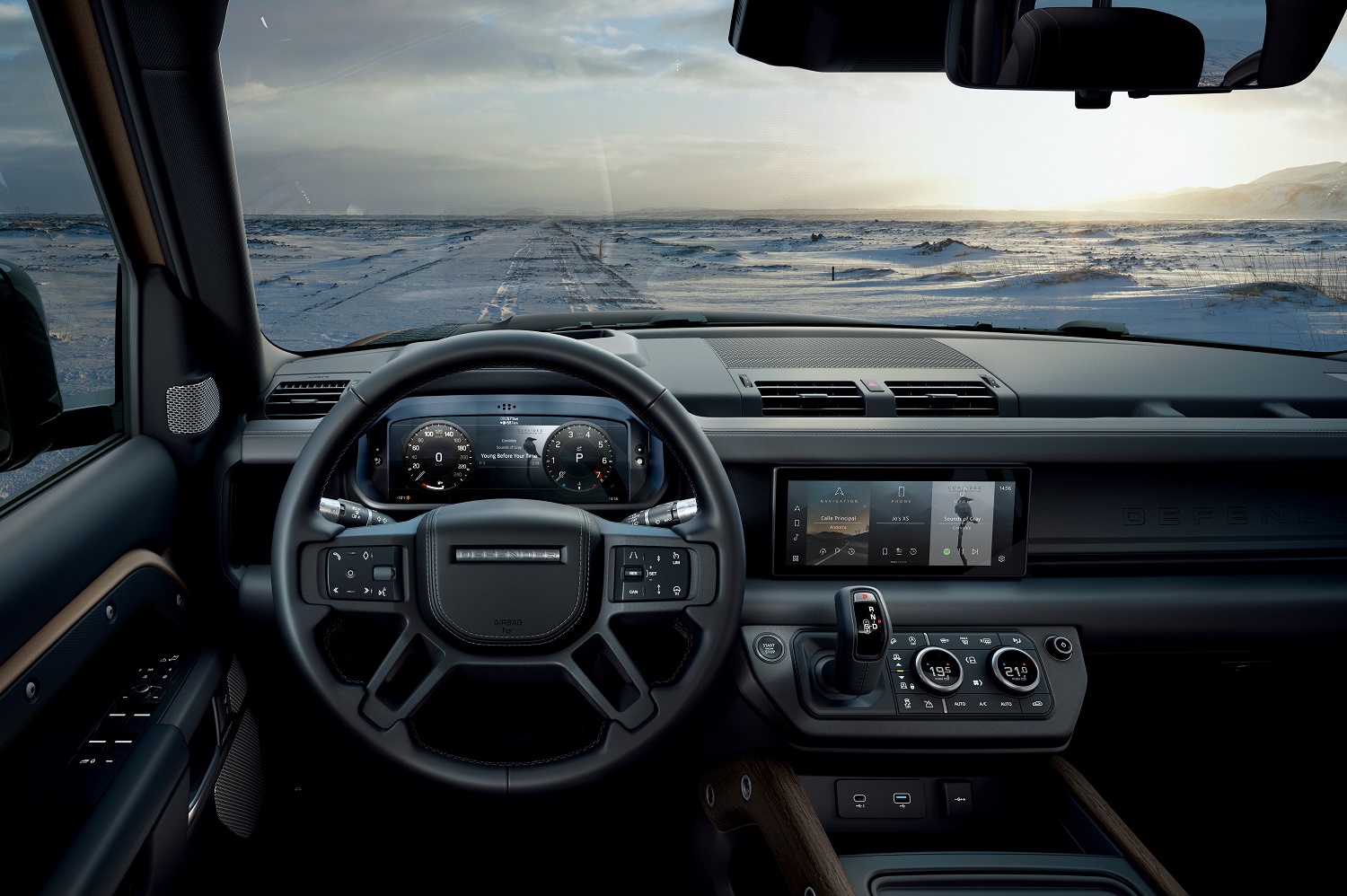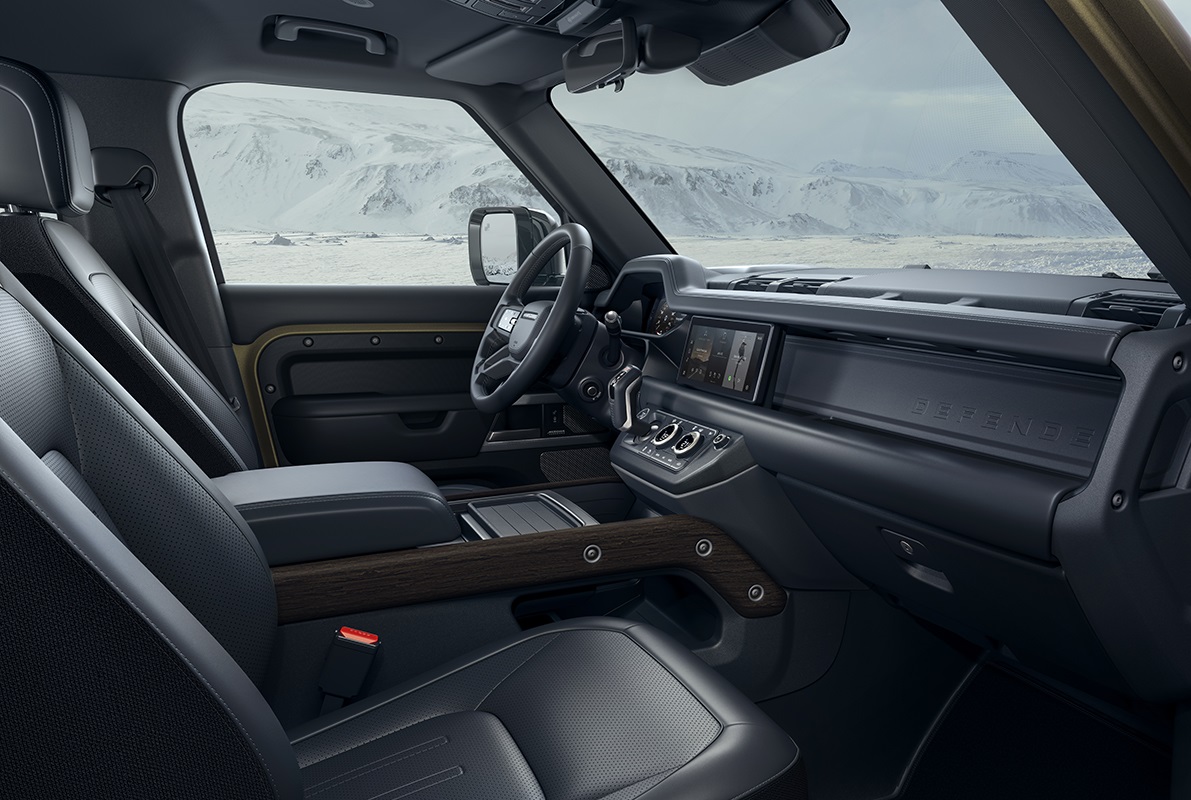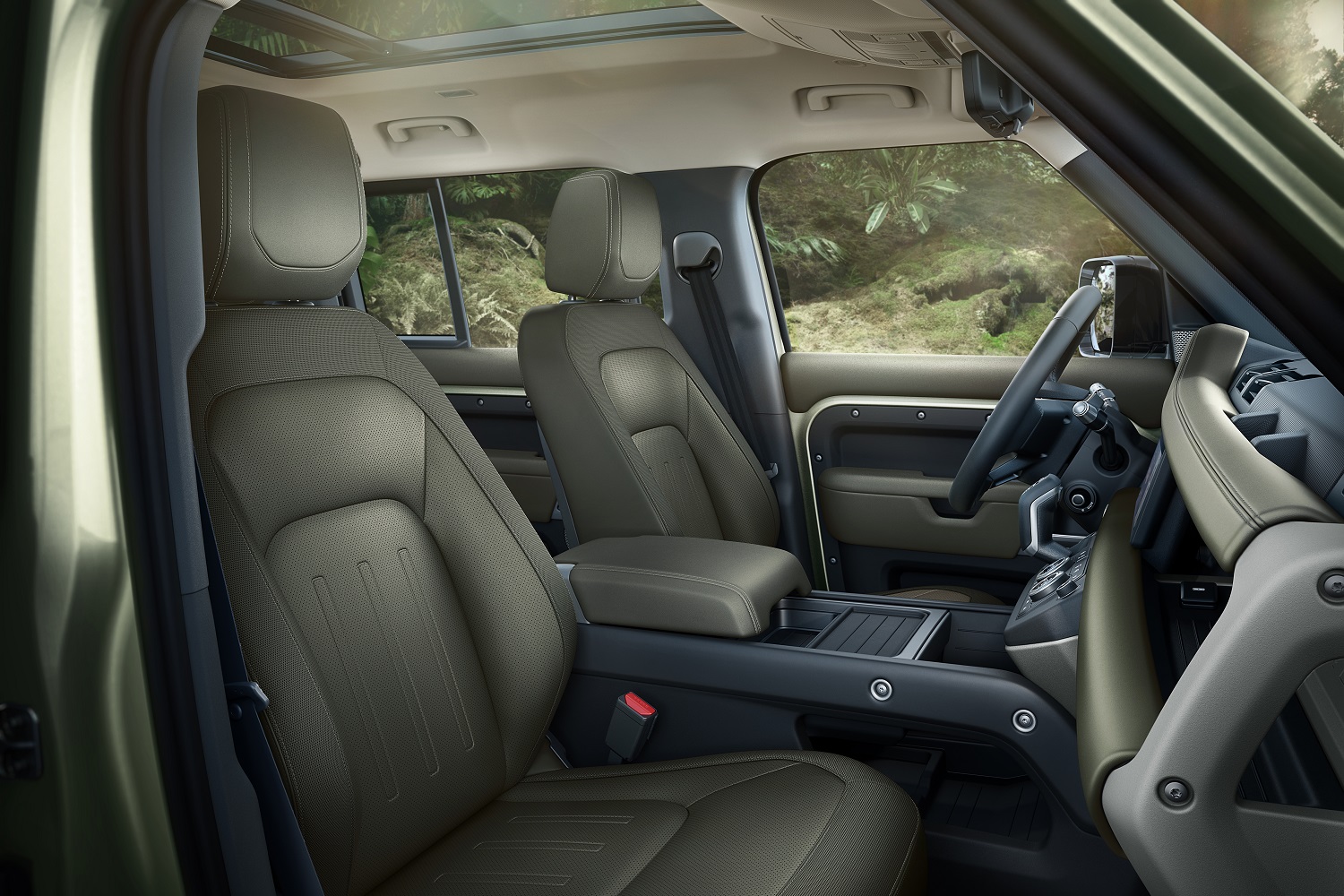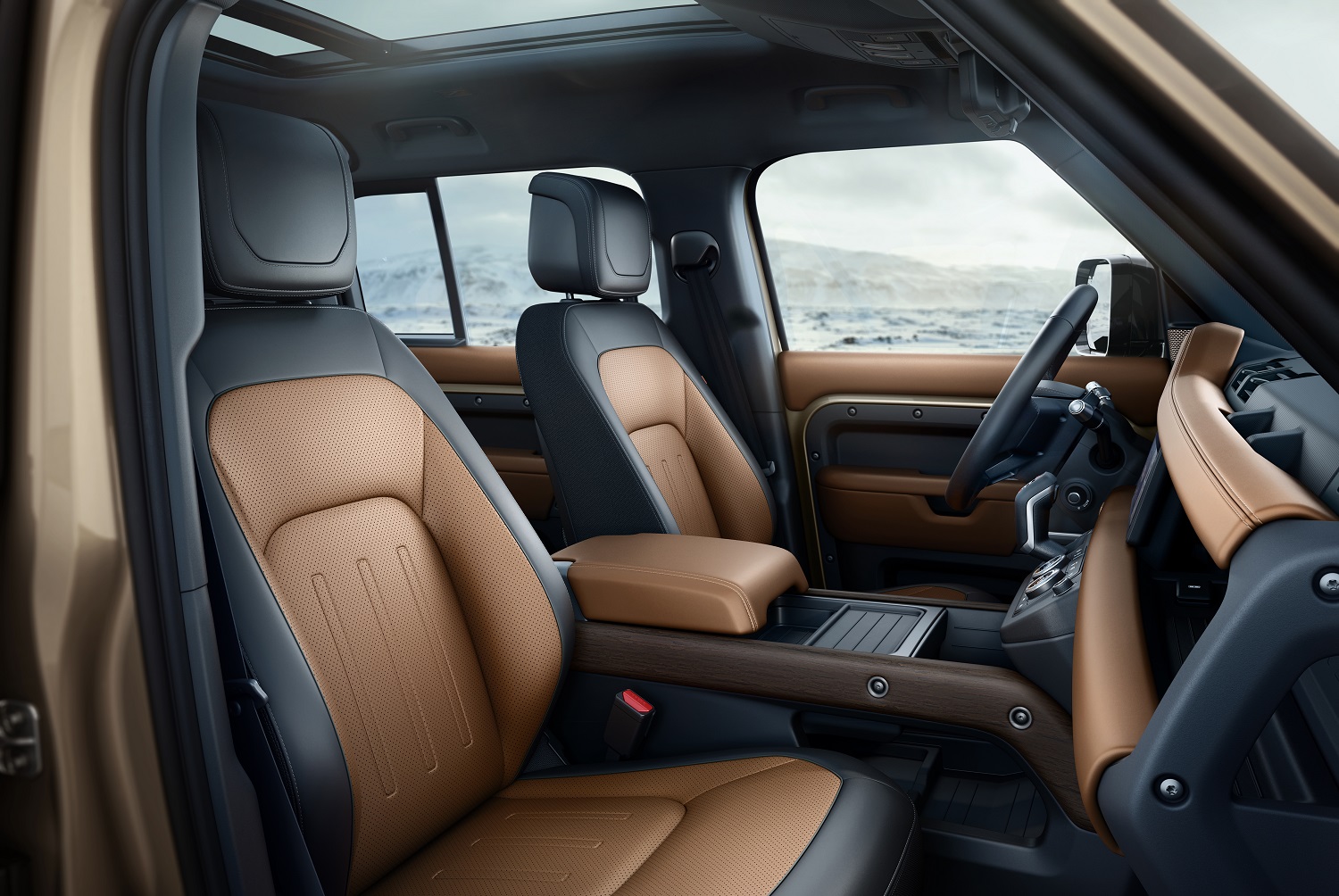Land Rover introduced the next-generation Defender, a model it proudly calls one of its key brand pillars, at the 2019 Frankfurt Auto Show. The hotly anticipated SUV wears a historic name, and it remains exceptionally capable off-road, but it’s not a retro-styled interpretation of its predecessor. It’s modern inside and out, and full of useful tech.
What does it look like?
Pedestrian safety norms and the basic principles of aerodynamics prevented Land Rover from giving the next-generation Defender a boxy design. The company’s stylists weren’t interested in going retro, either. Up front, the Defender ditches the boxy front end and upright grille worn by its predecessor and adopts a softer-looking design that borrows styling cues from other 4x4s in the Land Rover family. Out back, it keeps a door-mounted spare tire in a bid to appease purists.
The portfolio ranges from a relatively basic off-roader with steel wheels, to a full-on luxury chariot positioned as an alternative to the timeless Mercedes-Benz G-Class. It rides on an aluminum unibody platform instead of a steel frame, a move which boosts fuel efficiency by saving a tremendous amount of weight, but company boss Ralf Speth stressed the SUV was engineered to be exceptionally capable off the beaten path.
What are the specs?
The Defender lineup includes three variants called 90, 110, and 130, respectively. These are historic names the company used on the last-generation model, but they no longer correspond to the wheelbase. The 90 is a two-door model with five or six seats, the 110 is a four-door with up to seven seats, and the 130 is a long-wheelbase four-door variant with seating for up to eight passengers. Land Rover hasn’t mentioned a pickup, the body style the 130 nameplate used to denote.
While technical details about the 130 haven’t been released yet, we know the 90 will come with a turbocharged, 3.0-liter straight-six engine that works with a 48-volt mild hybrid powertrain to deliver 395 horsepower and 406 pound-feet of torque. It gives the SUV a 5.7-second zero-to-60-mph time. The 110 comes with a turbocharged, 2.0-liter four-cylinder rated at 296 horsepower and 295 pound-feet of torque. The six is optionally available on the 110, but the four isn’t available on the 90, strangely.
Both engines spin the four wheels via an eight-speed automatic transmission and a two-speed transfer case, and both give the Defender an 8,200-pound towing capacity. Other markets will be able to order the truck with a turbodiesel, and a full hybrid could arrive later in the production run. The Defender shares most of its mechanical components with other members of the Land Rover family.
Does it speak tech?
The original Defender was introduced in 1983 — not 1948 as many claim — and it changed little during its production run. By 2015, its last full calendar year in production, it had become endearingly obsolete. We had a blast driving one of the last examples to be built through a French forest but concluded it felt, sounded, and drove like a vehicle from another era. The new one was developed to feel, sound, and drive like a true 21st-century luxury SUV.
Even entry-level models come relatively well equipped with features like a 10-inch touchscreen for the infotainment system, a seven-inch digital instrument cluster, LED headlights, and a six-speaker sound system. Land Rover rewards buyers who move up the trim hierarchy with 18-way power-adjustable front seats, leather upholstery, a 14-speaker sound system, and a long list of electronic driving aids, features the original model could only dream of.
The 220 Land Rover Defender will go on sale in the United States in the coming months. Pricing starts at $49,900 with the four-cylinder, and $62,250 with the bigger six. Buyers will have several option packages to choose from, including the Explorer Pack, the Adventure Pack, and the Country Pack.
Updated on September 10, 2019: Added full information.


